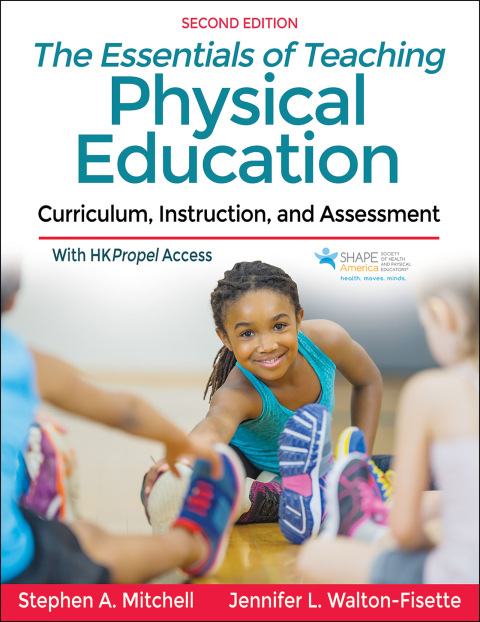Description
Efnisyfirlit
- Title Page
- Copyright
- Dedications
- Contents
- Preface
- Acknowledgments
- Part I: Building the Foundation of a Teaching for Learning Approach
- 1. Developing Physically Literate Individuals
- Promoting Physical Literacy
- Academic Links to Physical Literacy
- Summary
- 2. Understanding a Teaching for Learning Approach
- Curricular Alignment in Physical Education
- Instructional Alignment in Physical Education
- Summary
- 3. Examining Student Motivation
- Establishing a Motivating Environment
- Retaining Students’ Motivation
- Intrinsic Versus Extrinsic Motivation
- Eradicating Amotivation
- Summary
- 4. Understanding Social-Emotional Learning and Using Trauma-Informed Practices
- Social and Emotional Learning (SEL)
- Trauma-Informed Practices (TIPs)
- Becoming Self-Aware Through Critical Reflection
- Strategies on Fostering Resilient Learners
- Summary
- Part II: Teaching to the National Standards for K-12 Physical Education
- 5. Standard 1: Developing Motor Skills and Movement Patterns
- Competency Versus Proficiency
- Motor Skills and Phases of Performance
- Elementary School: K-Grade 5
- Middle School: Grades 6-8
- High School: Grades 9-12
- Summary
- 6. Standard 2: Applying Concepts, Principles, Strategies, and Tactics
- Elementary School: K-Grade 5
- Middle School: Grades 6-8
- High School: Grades 9-12
- Summary
- 7. Standard 3: Achieving Health-Enhancing Physical Activity and Fitness
- Elementary School: K-Grade 5
- Middle School: Grades 6-8
- High School: Grades 9-12
- Summary
- 8. Standard 4: Exhibiting Responsible Personal and Social Behavior
- Elementary School: K-Grade 5
- Middle School: Grades 6-8
- High School: Grades 9-12
- Summary
- 9. Standard 5: Recognizing the Value of Physical Activity
- Elementary School: K-Grade 5
- Middle School: Grades 6-8
- High School: Grades 9-12
- Summary
- Part III: Building the Curriculum
- 10. Unit and Lesson Planning
- Unit Planning
- Lesson Planning
- Summary
- 11. Planning Developmentally Appropriate Content
- Types of Knowledge
- Standards, Outcomes, and Assessments
- Learning Domains
- Students’ Prior Knowledge and Experiences
- Sequencing of Content and Task Progressions
- Modifying Content
- Summary
- 12. Curriculum Models as Organizing Frameworks
- Skill Theme Approach
- Teaching Personal and Social Responsibility
- Tactical Games Model
- Sport Education Model
- Fitness Education
- Adventure Education
- Outdoor Education
- Cultural Studies
- Implementing Curriculum Models Within Units of Instruction
- Summary
- Part IV: Instruction and Assessment
- 13. Establishing and Managing a Safe Learning Environment
- Setting Rules for Your Gymnasium
- Managing Student Behavior
- Maximizing Learning and Activity Time
- Managing the Learning Environment During Instruction and Activity
- Summary
- 14. Developing Essential Teaching Skills
- Exploring Instructional Styles
- Employing Effective Teaching Tactics
- Summary
- 15. Assessing Student Learning
- Purposes of Assessment
- Grading Schemes
- Selecting Appropriate Assessments
- Types of Assessments
- Organizing and Interpreting Data
- Summary
- Part V: Developing as a Professional
- 16. 21st Century Skills in Physical Education
- Framework for 21st Century Learning
- 21st Century Student Outcomes
- 21st Century Support Systems
- Summary
- 17. Advocacy, Professionalism, and Professional Development
- Advocating for Your Profession
- Professional Development Opportunities
- Summary
- Glossary
- References
- Index
- About the Authors
- About SHAPE America






Reviews
There are no reviews yet.